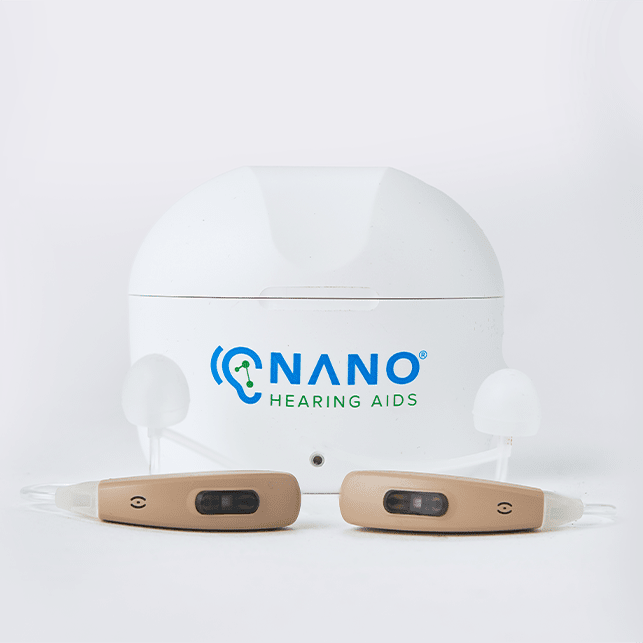Hearing aids contain various small parts that help them function properly. These parts help hearing aids to receive and amplify sounds for individuals with hearing loss. Some of these parts are absent or modified according to the model of hearing aids that you have.
Behind-the-ear hearing aids have a soft tube in them in order to help patients with high-frequency hearing loss. This tube needs changing after a certain amount of time as part of regular maintenance. Failure to change the tube, or changing it improperly can cause various problems.

In this article, we will discuss how to fit a hearing aid tube properly and why it needs to be changed.
Purpose of the Slim Tube in BTE Hearing Aids
Behind the ear hearing aids are comparatively powerful and can help in treating moderate to severe hearing loss. Behind the ear hearing aids sit exactly as described: behind the ear. It has a custom-made earmold to conduct sound from the hearing aid. These two parts are connected with a small clear tube.
This small thin tube helps people with high-frequency hearing loss in many ways. The most notable problem it addresses is the occlusion effect.
When someone has an occlusion effect, the users hear their voices comparatively loudly. It often occurs due to ear canal plugging. These small thin tubes in BTE hearing aids deliver sound to your ears via soft domes that are pushed into your ear canals. As a result, you won’t experience the occlusion effect.
When to Change the Slim Tube in your Hearing Aid?
The slim tube looks clear and is flexible while new. However, with time the tube gets hard and yellowish. We recommend you replace the slim tube of your hearing aid after six months. You can make appointments with your audiologist at the same time and ask them to replace your hearing aid’s slim tube.
How to Fit a New Tube in a Hearing Aid
Changing the slim tubes is very easy. You can successfully do it at home as follows:
Background Noise
To change the slim tube, you will need the following equipment:
How to Change the Slim Tube
Step 1: Detach the slim tube from your hearing aid and earmold. In some hearing aids, you will need to twist open the slim tube. In such cases, a hearing aid cleaning tool will come in handy. Don’t throw away the tube; it will be needed soon.
Step 2: Cut the new tube pointedly at one side.
Step 3: Push the cut side into your earmold until it reaches the bend of the slim tube. Sometimes the new tubes are too tight to insert into the earmold. In such cases, you will need to stretch the slim tube with tools like needle-nose pliers.
Step 4: Cut the extra tube that comes out of the earmold. Make it as clean as possible, so it is not noticeable.
Step 5: Now, take your old slim tube and mark the other side of your new slim tube; then cut it.
Step 6: Attach the tube with your hearing aid. You may need to use your hearing aid cleaning tool depending on your hearing aid model.
Precautions While Replacing the Tube
Advantages and Disadvantages of Slim Tube BTE Hearing Aids
There are several advantages and disadvantages of slim tube BTE hearing aids. They are:
Pros:
Cons:
Final Words
Behind-the-ear hearing aids are some of the most powerful devices. They can help adults and children that experience hearing loss hear more clearly and loudly. Keeping hearing aid clean is very necessary for listening and taking part in conversations.
The slim tube in BTE hearing aids attracts dirt and gets hard over time. So, changing it every six months is a necessity. If you follow the directions above, you can easily change them yourself.
If you face any difficulties, consult your audiologist immediately. They can help you change and clean your hearing aids properly.


